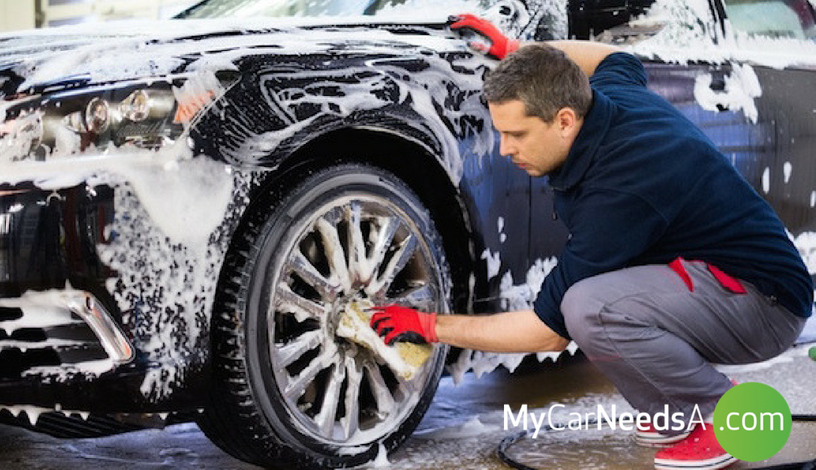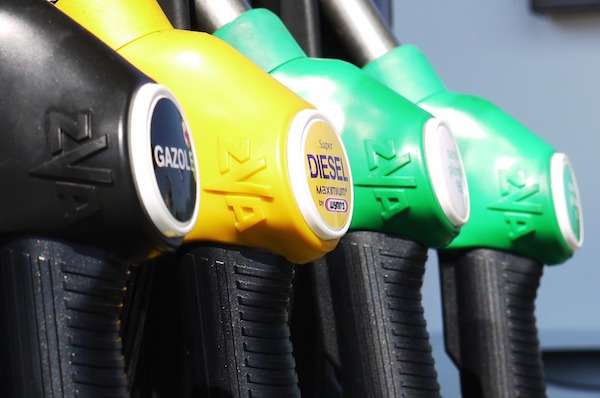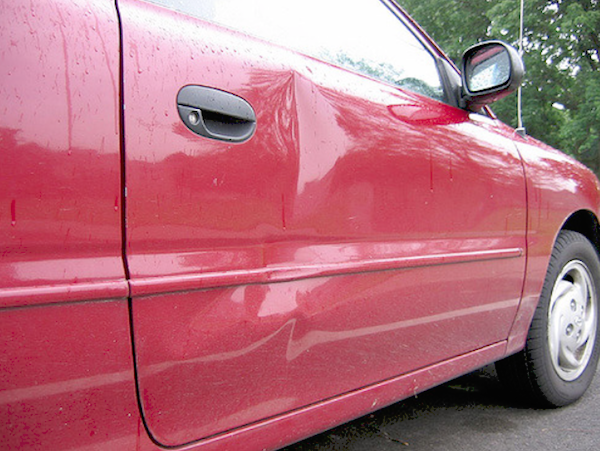Jan 18, 2017

It’s resolutions time again. And if you run a car which you rely heavily on, whether it’s to get you to work, or visit family members, why not add to your list a promise to look after your car the best you can?
The benefits you can get in return speak for themselves - more reliability, better fuel consumption, safer driving, and you save in the longer term by having some predictability around your servicing and maintenance costs.
Here then, MyCarNeedsA.com presents 17 ways in which you can give your car a little TLC which should be rewarded by way of dependability throughout the year, and the knowledge that, at important times such as holidays, trips away and the like, you won’t be left crying on the hard shoulder.
1. Keep the pressure up. Maintaining the right tyre pressures is a simple check - you can even buy a gauge from any good spares shop so you can do this at home. Under-inflated tyres cause heat to build up more quickly inside them, which increases the risk of blow-outs. Check out your car’s manual to find the right pressures for your tyres, get them adjusted, then check and adjust them once a week - it’ll take less than 10 minutes once you know what you’re doing.
2. Check for other tyre damage. At the same time, look out for bulges in the side walls - which could a result of ‘kerbing’ a wheel - or objects stuck in or cuts to the tyre tread. Any of these could be storing up problems and possibly cause a puncture.
3. Check your washer bottle. While you’re looking at your tyres, you can also lift your bonnet and see how much fluid is in your washer bottle. On cold days, you should also add some screenwash - you can get this from most supermarkets, but certainly from a carparts shop - to help stop the water from freezing in the tank. Some modern cars will show a dashboard warning light when the fluid level’s getting low - but lots don’t. So know where to look, and again, check it regularly to stop it from running out. If it’s found to be empty when you’re stopped for any check by police, you’ll be slapped with a fixed penalty fine and points.
4. Check you’ve got the tools you’ll need in an emergency. Many cars these days don’t come with even a temporary, space-saver spare tyre. But you’ll at least need the tools to remove a wheel with a punctured tyre. So check that you know what and where they are - you should have a jack, wheelbrace, and a key to unlock any locking wheel nuts fitted. While you’re at it, read through the manual so you know how to use them.
5. Keep a visible note of the type of fuel your car takes. OK, so it’s second nature to know what you’re doing when you fill your car with petrol or diesel. But motoring organisations reckon that someone puts the wrong type of fuel in their car every three to four minutes in the UK. Lots of vehicles now have a sticker on the inside of their fuel filler cap door - but if yours doesn’t stick your own note somewhere prominent, such as above the driver’s door handle, to remind you.

6. Know where your engine coolant bottle is and check the level regularly. Another simple check you can do yourself - this small plastic bottle should be marked with ‘min’ and ‘max’ lines. Check that the level of fluid stays between these lines at all times - it’s another quick check you can add to your weekly list, and do while the engine is cold.
7. ‘Screen’ your screen. Take a close look at your windscreen regularly, keeping a particularly keen eye out for any stone chip damage. With the vibration brought about by driving, a small chip can easily become a more dangerous crack. This could make your car illegal to drive, and in extreme cases, possibly lead to the screen shattering under the force of another impact.
8. Check and clean your light covers. Most modern cars’ lights and lenses are protected by a shatterproof plastic cover. These can quickly and easily become obscured by road dirt, so affecting the performance of your lights. Take a damp cloth to them and clear off all the accumulated grime - you’ll be surprised at the difference this can make to your vision!
9. Check your power steering fluid. Steering feeling soggy or lacking in feel in general? The hydraulic fluid which powers it could be low - so find the reservoir and check its level, topping up if necessary.
10. Take a shine to your bodywork. Giving your car a good clean with warm water and a proper car shampoo will not only help it stay looking good - it will also show up any scratches, blemishes or small dents which have been sustained. And following on from this:
11. Deal with dings promptly. Left to their own devices, small patches of damage can spread rust under your car’s paintwork, which might break out big-time into unsightly blemishes. Lots of garages of all sizes specialise in so-called ‘smart’ repairs. These will fix any small dents and scratches without the need to send your car to a specialist bodyshop.

12. Check your air filter (and replace if necessary): Because it’s perched right on top of your engine, this is an easy DIY car maintenance job. The filter cleans the air drawn into the engine before it reaches the cylinders. You can easily release the hinge on the cover, lift out the cartridge containing the air filter and drop in a new one. This could improve your fuel economy by as much as 14 per cent.
13. Check and top up your engine oil: New drivers could be asked to demonstrate that they know where the car’s dipstick is and how to use it to check the engine’s oil level as part of their driving test. Make sure you have it done according to your manufacturer’s oil change service schedule, and your engine will work far more smoothly.
14. Keep your car interior clean: If you keep the inside of your car - the upholstery and trim - looking smart, this will be a big help when you come to sell it, as prospective owners will take this as a sign that the car’s been well looked-after.
15. Get your eyes tested, and buy new glasses if needed: Spot-checks on drivers revealed as many as 40 per cent could be ‘driving blind’, that is, with glasses or other aids which are out-of-date for their needs. Apart from being illegal, this could contribute to a massive number of accidents. Don’t be one of them.

16. Make sure you know when your car’s MoT is due: This applies if it’s over three years old. It’s a pretty thorough check of the most important mechanical, electrical and safety features of the car, and, most importantly, costs £54.85 at the time of writing for most cars. If the car fails, you’ll soon find costs spiralling. So know the date well in advance, and book a pre-MoT check with a friendly local garage. That way, they’ll spot and put right any potential failures, so reducing the stress of this annual job.
17. Last, but by no means least - sign up for, and keep your contact details up-to-date with, MyCarNeedsA.com: Thousands of drivers are already registered to use our service - but we need to know where you are to be able to serve you best by putting you in touch with garages and other providers who are close by and can help you with any maintenance or repairs on your car. Join them by registering today, or signing in to your account, and help us help you by always having the right details for you and your vehicle.
If you’re signed up as a MyCarNeedsA.com user, you’ll have no trouble remembering the major maintenance work and other important facts such as its MoT due date, because you can set up reminders for these on your account. Sign up today to get the benefit of free reminders for important jobs on your car, and be able to get quotes from thousands of trusted garages and repairers.